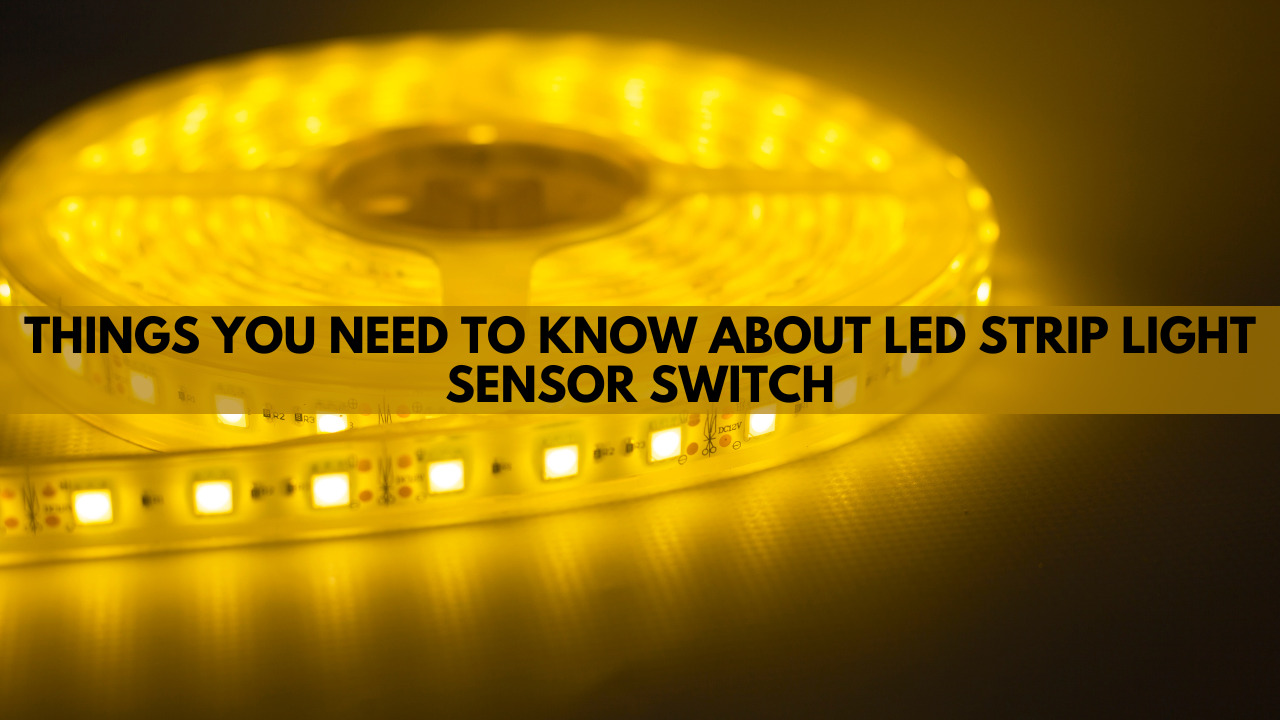An LED strip light sensor switch is a great solution for unoccupied rooms that always seem to be lit up even when no one is in them for people who frequently forget to turn off the lights. When a person enters a room, a motion sensor light switch that detects motion or body heat turns on the light; when the person leaves, it turns off.
The radiant energy that exists in a very specific range of frequencies and is often referred to as light is measured by a light sensor, which produces an output signal showing the intensity of light. Light sensors are passive devices that transform light energy from the visible and infrared ranges of the spectrum into an electrical signal output.
There are two basic types of photoelectric devices: those that produce electricity when lit, such as photo-resistors, and those that modify their electrical properties, such as photo-conductors. This article will examine the crucial elements when choosing the finest motion sensor switch.
Table of Contents
What Are The Basic Types Of LED Strip Lights Sensors?
Photoinductive Sensors
When sufficiently energetic photons strike one of these photodevices, free electrons are released from a light-sensitive substance like cesium. The photons’ energy varies with light frequency; the greater the frequency, the more energy the photons have when converting light energy into electrical energy.
Photo Conductive Sensors
When exposed to light, these photodevices change in electrical resistance. Light strikes a semiconductor material and becomes photoconductive, controlling the current that passes through it.
More light will therefore increase the current at a given applied voltage. Cadmium sulfide is the most often utilized photoconductive substance in photocells.
Photo Junction Sensors
These photodevices, which primarily consist of genuine semiconductors like the photodiode and phototransistor, employ light to regulate the flow of electrons throughout their junctions.
With their spectral response tailored to the wavelength of the incident light, photojunction devices are specifically created for detector applications and light penetration.
Photo Voltaic Sensors
These photodevices produce a similar effect to photoconductivity, which produce an emf proportional to the radiant light energy received. Two sandwiched semiconductor materials receive light energy, which causes a voltage to be produced. Selenium, utilized in solar cells, is the most popular photovoltaic substance.
Things To Consider Before Choosing LED Strip Lights Sensor Switch
A surprising number of things need to be considered when buying a motion sensor light switch, even though it only has to turn on or off the lights in a room. Continue reading to learn about these practical electrical devices’ two different types, the distinction between sensors, and other important attributes.
Types Of Sensor Switches
There are occupancy and vacancy motion sensor light switches, many of which can flip between the two. A person entering the room triggers an occupancy light switch, turning the light on and off after a predetermined time.
A person entering a room with a vacant light switch must manually turn on the light. But when a room is left empty for a predetermined amount of time, vacancy light switches automatically turn the light off.
While vacant light switches might not be as convenient, they are more energy-efficient because the user may frequently not need to choose AI lights when there is already natural light. In contrast, unless they incorporate a light sensor, occupancy light switches will turn on the light regardless of the amount of lighting in the space.
Light Sensing Properties
Lights are turned on or off, dependent on the amount of ambient lighting detected by sensors. The sensor won’t switch on the lights if it determines that the space is sufficiently bright. Dials on daylight sensors allow the user to adjust the sensitivity.
The majority of motion sensor lights are not dimmable. However, some specialized models can be dimmed. These switches have a paddle switch for dimming and a motion detector for lighting. To fine-tune the amount of movement that activates the light, many LED sensor light switches include sensitivity options.
Compatibility Level
Sensor switches for LED strip lights may handle a sizable amount of wattage. Sensor switches for LED strip lights can manage a sizable amount of wattage. This might be crucial if the switch controls a lighting fixture with several light bulbs.
A light switch with a capacity larger than 360 watts would be necessary for an incandescent kitchen light fixture.
Sensor Switches Installation
Most DIYers can execute the project in under 30 minutes by switching out a regular light switch for a motion sensor while following the necessary safety precautions. While a voltage detector, a cheap gadget that determines whether a wire is live for safety reasons, is a good idea, it is not necessary to use special instruments to complete the task.
Only a flathead and a basic Phillips screwdriver are often needed for light switch installations. Two wires plus a ground wire are present in single-pole light switches. A hot wire from the home’s electrical supply is attached to one of the switch’s terminals.
The other terminal is connected to a second cable that runs to the light fixture. To save the light switch from shorting out, a copper wire that serves as the grounding wire is connected to a third terminal.
Conclusion
By turning off lights that a person might otherwise keep on unnecessarily in bathrooms and storage rooms, LED strip light sensor switches can help save money in spaces with low to medium traffic. When lights are constantly turned on and off in high-traffic areas, they are less useful since they waste energy.
Most LED strip light sensors are permanently on due to the switch’s occupancy mode. The user can toggle on or off the occupancy mode on many motion sensor light switches. The light will turn off by the delay period selected on the switch if the occupancy mode is enabled. In the absence of occupancy mode, the light will always be on.





